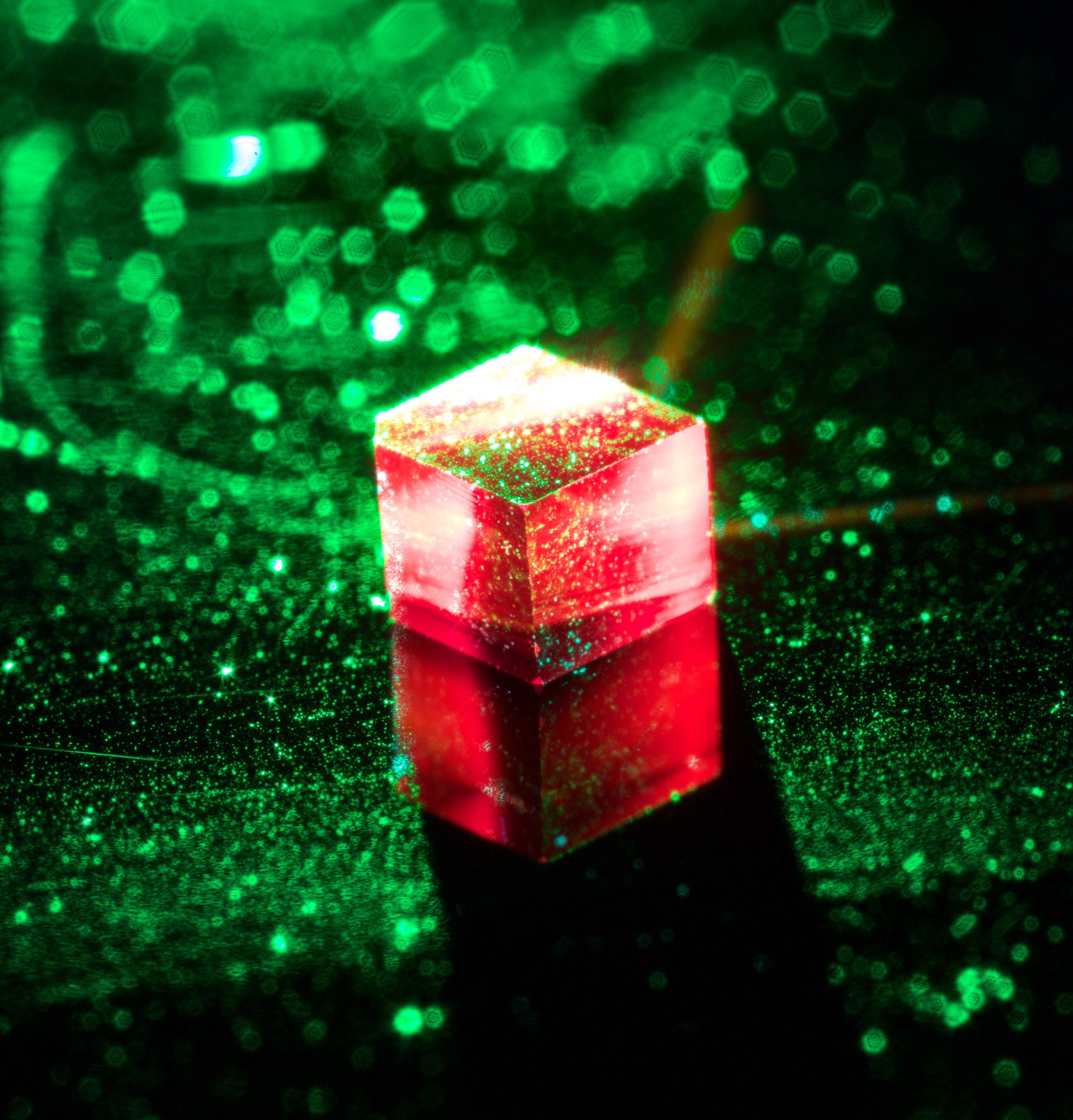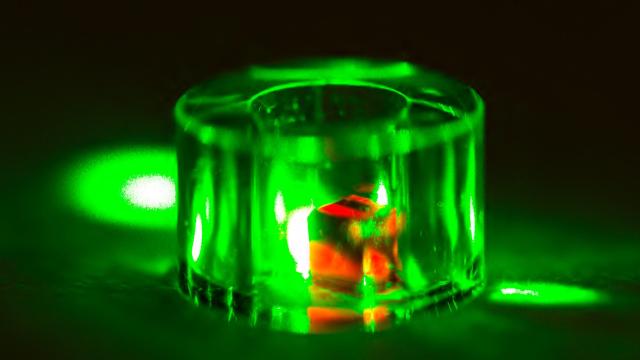Scientists have used the same technology that brought us time crystals to create a room-temperature maser – a microwave laser – that overcomes many of masers’ past problems.
A diamond inside a sapphire ring lit by a green laser. Photo: Thomas Angus (Imperial College London)
Masers predate lasers. They’re pretty much the same thing, but masers shoot out microwave light instead of visible or infrared light. Lasers have always been more popular, since masers have only worked in short pulses and required incredibly cold temperatures and vacuums to operate. But now, a team of scientists in the United Kingdom has overcome both old and new challenges to debut their continuously emitting, room-temperature maser. Their research was published this week in Nature.
Masers and lasers operate on basically the same principle. Atoms typically have electrons orbiting their nuclei in specific energy levels. Add some energy in the form of, say, a photon, and the electrons jump to higher energy levels. Pump enough of those electrons into the same higher energy level, and you can release a cascade of photons of the same colour (or wavelength, in physics speak) whose waves line up.
Scientists achieved this effect in the 1960s using microwaves in a special kind of sapphire crystal, but it required extreme cooling to prevent other physical effects from stopping the maser’s emission. Since then, producing this so-called “stimulated emission” has almost always been done with visible and infrared light, producing lasers. Masers’ limitations have relegated them to more esoteric physical uses, such as amplifying signals in some telescopes and keeping time in advanced clocks, unlike lasers, which seem to be virtually everywhere.

A fluorescing diamond with nitrogen vacancies. Photo: Thomas Angus (Imperial College London)
The British team has now created a maser that doesn’t require super-cold temperatures, using nitrogen-vacancy centres in diamonds. Diamonds are lattices of carbon atoms where each carbon connects to four others. But if you swap one of the carbons with a nitrogen, you’re left with vacant centre where there should be, but is not, a carbon atom. All the adjacent carbon atoms have nothing to connect to in that region, which is just excess electrons.
The researchers begin by pumping this lab-made diamond with a laser, which excites the electrons in the vacancy centres to a higher wavelength. Those electrons quickly drop down into the ground state – but there’s a catch. The researchers aligned the diamond along a magnetic field using a sapphire ring, which breaks the ground state up into sub-levels of differing energy, based on an innate property of the electron called spin. The electrons then dropped from the higher to the lower of these ground-state sub-levels to produce a continuous beam of microwaves – the maser.
This isn’t the first room-temperature maser – one team of physicists unveiled a maser in 2012 using a different masing medium. But those masers only lasted for microsecond pulses. The new maser has a continuous beam.
Others are excited about this breakthrough. Physicist Erik Bauch at Harvard, who was not involved in the new study, told Gizmodo that prior to seeing this experiment, he and his peers were sceptical that a nitrogen-vacancy-based maser would work. “This paper is compelling from a technical perspective and an exciting milestone for the NV center community,” he told Gizmodo. He also foresaw the work advancing nitrogen-vacancy centre research in general.
The scientists say there’s still a ways to go before people can begin to use these masers, according to their press release, and Bauch said that there are still other established masers technologies this new device would need to compete with, should the authors wish to see their maser hit the mainstream. Still, the researchers behind this work envision eventual uses in astronomy, MRI, secure communications and super-precise clocks.
Physics can truly be a-mase-ing.
[Nature]
